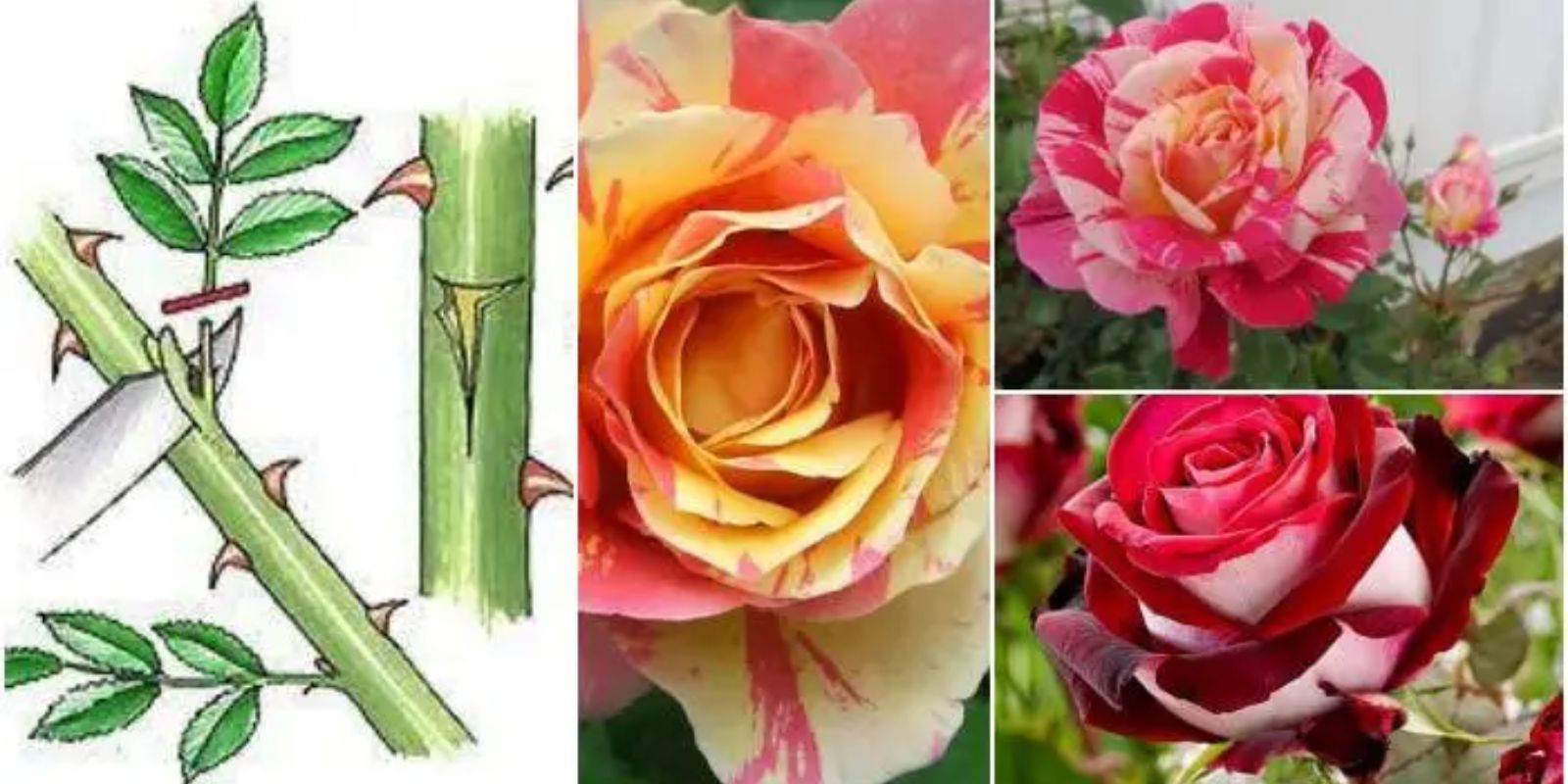Grafting roses is a time-honored gardening technique that allows enthusiasts to create unique and breathtaking rose bushes by merging the best characteristics of different varieties. Whether you want to combine a strong rootstock with a vibrant bloom or experiment with creating a rose bush featuring multiple colors, grafting opens a world of possibilities.
This guide will walk you through the entire process of grafting roses, step-by-step, while offering essential tips and insights to ensure your success. Let’s dive into the art and science of rose grafting!
What is Rose Grafting?
Grafting is a horticultural technique where two plants are joined to grow as one. In roses, this involves taking the rootstock (the base and roots of one rose variety) and combining it with the scion (a cutting from the desired variety). The result is a plant that harnesses the hardiness of the rootstock and the beauty of the scion.
The benefits of grafting roses include:
- Increased resistance to pests and diseases.
- Enhanced growth and blooming.
- The ability to combine multiple rose varieties on one plant.
Materials You’ll Need
Before starting, gather the following materials:
- A healthy rootstock (e.g., Rosa multiflora or Dr. Huey).
- A fresh scion from your desired rose variety.
- A sharp, sterilized grafting knife or pruning shears.
- Grafting tape, plastic wrap, or grafting clips.
- A pair of gloves for protection.
- Water and a clean workspace.
Step-by-Step Guide to Grafting Roses
1. Choose the Right Time for Grafting
The ideal time to graft roses is during late winter or early spring when the plant is still dormant. This ensures minimal stress on the plants and promotes better bonding between the scion and rootstock.
2. Select Healthy Plants
- Rootstock: Choose a robust rootstock that is pest-resistant and adapted to your soil conditions. Popular rootstocks include Rosa multiflora and Dr. Huey.
- Scion: Select a healthy cutting with at least three buds from the rose variety you wish to graft.
3. Prepare the Rootstock
- Make a clean horizontal cut on the rootstock about 6–8 inches above the soil.
- Create a small vertical slit (about 1–1.5 inches long) at the center of the cut to hold the scion securely.
4. Prepare the Scion
- Take the desired cutting and trim it to about 4–6 inches in length.
- Shape the base of the scion into a wedge by making two slanting cuts on either side. The wedge should be smooth and narrow to fit neatly into the rootstock slit.
5. Join the Scion and Rootstock
- Carefully insert the scion’s wedge into the slit on the rootstock. Ensure that the cambium layers (the green tissue beneath the bark) of both pieces align. This is crucial for the graft to take successfully.
6. Secure the Graft
- Wrap the grafted area tightly with grafting tape, cling film, or a specialized rubber band. The goal is to hold the scion and rootstock firmly together while preventing moisture loss.
7. Provide Post-Grafting Care
- Place the grafted rose in a sheltered location with indirect sunlight to protect it from harsh conditions.
- Water the plant regularly but avoid overwatering, which can lead to rot.
- Monitor the grafted area to ensure no pests or diseases interfere with healing.
8. Encourage Growth
After about 4–6 weeks, the graft should begin to heal, and new growth will emerge from the scion. At this stage, remove the tape gently to avoid damaging the graft. Continue caring for the rose as it establishes itself.
Pro Tips for Successful Rose Grafting
- Sterilize Tools: Always use clean and sharp tools to prevent infections.
- Align the Cambium Layers: Misalignment can lead to graft failure, so take extra care during this step.
- Use Fresh Cuttings: The fresher the scion, the higher the chances of a successful graft.
- Protect from Frost: If you’re grafting during cooler months, shield your roses with mulch or a frost cloth.
- Prune Rootstock Shoots: Remove any shoots that emerge from below the graft to direct energy to the scion.
Why Graft Roses?
Grafting roses isn’t just about functionality—it’s also about creativity and artistry. By mastering this skill, you can:
- Create a rose bush with multiple colors or blooms.
- Grow rare or delicate varieties on hardy rootstocks.
- Save an old or damaged rose plant by grafting its scion onto a new rootstock.
The joy of watching a successful graft thrive is immensely rewarding and adds a personal touch to your garden.
Common Mistakes to Avoid
- Poor Alignment: Misaligned cambium layers are the most common reason grafts fail.
- Improper Securing: If the graft isn’t secured tightly, the union may not hold.
- Neglecting Aftercare: A graft needs attention to thrive, especially in the first few weeks.
- Using Weak Scions: Avoid scions that appear weak, dry, or diseased.
Final Thoughts
Grafting roses is a fascinating process that combines horticultural skill with creative expression. With patience, practice, and the tips shared in this guide, you can master the art of grafting and cultivate rose bushes that are as unique as they are beautiful.
🌹 Have you tried grafting roses? Share your experiences and tips in the comments below!

